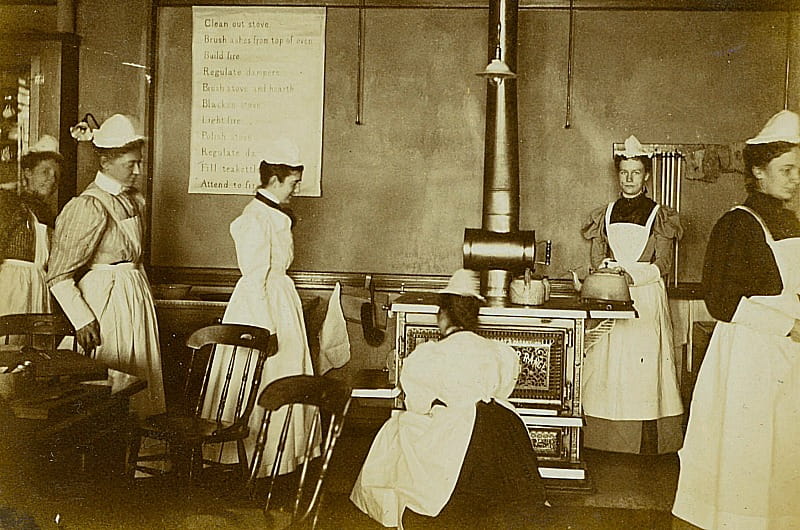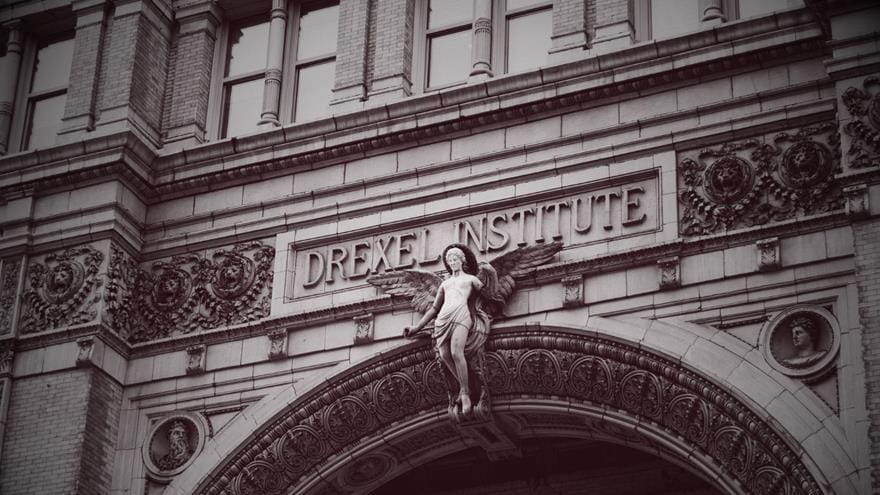The Drexel Institute That Almost Was

This article is part of the DrexelNow "Faces of Drexel" series honoring Drexel's history as part of the Universitywide celebration of the 125th anniversary of Drexel's founding in 1891.
The Drexel Institute of Art, Science and Industry that was founded in 1891 almost didn’t exist.
The school was created to offer practical classes regardless of gender, religion, race or class — a revolutionary vision that came from its founder, banker and philanthropist Anthony “Tony” J. Drexel. But just three years before Drexel’s founding, Tony was trying to open a very different school that would have born his name: a women’s industrial college in the suburbs of Philadelphia.
His intention was announced in a March 1888 article published in the Public Ledger, a popular newspaper he co-owned with George W. Childs, his lifelong friend and the publication’s editor. The institute, he explained, would train women “in such ways as to help them to employments and occupations in which they could earn a liberal living.” About 200 students would board at the school and 400 or 500 more would commute from home. Tony even purchased an estate in Wayne, Pennsylvania, for the school in 1886.
The idea of creating educational opportunities for others might have been in Drexel’s head as early as 1862. That year, he was approached by Matthew Vassar to help fund the first degree-granting institution of higher education for women in the United States (which became Vassar College). Tony declined, presumably because he would rather fund an institution of his own liking and with his own name.
Many years went by before Tony was approached again to support women’s education with his name and money. In 1881, his friend Eliza Sproat Turner, a local suffragette and activist, began teaching what is believed to be America’s first evening classes for working girls and women. Using funds from Tony and Childs, Turner started trade classes in 1886 at her newly cofounded New Century Guild (one of the first settlement houses for working women). Courses included typesetting, glass cutting, leaded glass designing, dressmaking, bookkeeping and cooking — all vocational classes that could be taught in a school Tony founded, it seemed.
Tony knew the value of learning a trade better than anyone else. He was just 13 when he started working as a clerk in his father’s new banking company with his 15-year-old brother Francis Anthony. As the owner’s son, Tony was expected to work longer and harder than other employees, often eating dinner at the office and sometimes staying overnight. While he was still in his teens, he was put in charge of running the office while his father was away.
“The boys’ training was unique in one respect. Most American businessmen of the time were narrow men preoccupied solely with making money. The Drexel brothers, by contrast, were the products of a broadly educated, disciplined, and affectionate family,” wrote Dan Rottenberg, author of “The Man Who Made Wall Street: Anthony J. Drexel and the Rise of Modern Finance.”
As we all know, Tony’s plan for a women’s industrial institute ultimately fell through. After researching similar schools for possible models, he found that urban schools were more successful in vocational training. The isolated suburb of Wayne was too far from Philadelphia and too close to Bryn Mawr College, a women’s college that opened in 1885.
Another possible reason for the change of heart could be his niece, the future Saint Katharine Drexel. She had recently announced her intention to become a nun and found her own order (the Sisters of the Blessed Sacrament) to provide for underserved Native Americans and African Americans.
“Perhaps inspired by the dedication of his Catholic niece, [Tony] became convinced that neither creed nor gender should bar any qualified applicant from attending his proposed institute,” wrote Rottenberg.
By late 1889, Tony had a new vision for a nonsectarian and coed industrial school. The Public Ledger published an article about his plans article to “correct erroneous impressions about the Drexel Industrial Institute” while providing “a review of the circumstances which have modified and enlarged that purpose.” The coed vocational school would be the first of its kind in Philadelphia but similar to New York City’s new Pratt Institute and Cooper Union (both of which were formed by self-made men with rudimentary educations). That year, construction began on Drexel’s future Main Building, which was located on 32nd and Chestnut streets next to two railroad lines and several trolley lines.
Most of Tony’s original ideas and values translated into Drexel’s mission. He always wanted to promote social change through empowerment; that’s why Drexel offered practical trade classes like business and library science in lieu of traditional courses like philosophy or Latin. Faculty from Turner’s New Century Guild even taught dressmaking, glass cutting, millinery and typesetting at the Drexel Institute. The Institute also offered unprecedented benefits to students, like low tuition, night classes and full scholarships.
“I want them to lead happy as well as useful lives,” Tony reportedly said about his wish for Drexel students.
Most importantly, elements of Tony’s first idea of empowering women were transferred over to the new Drexel Institute: Drexel was co-ed from the start. The neighboring University of Pennsylvania only admitted its first women students in 1880 — about 123 years after it graduated its first class and 12 years before Drexel would do the same.
In This Article
Drexel News is produced by
University Marketing and Communications.

